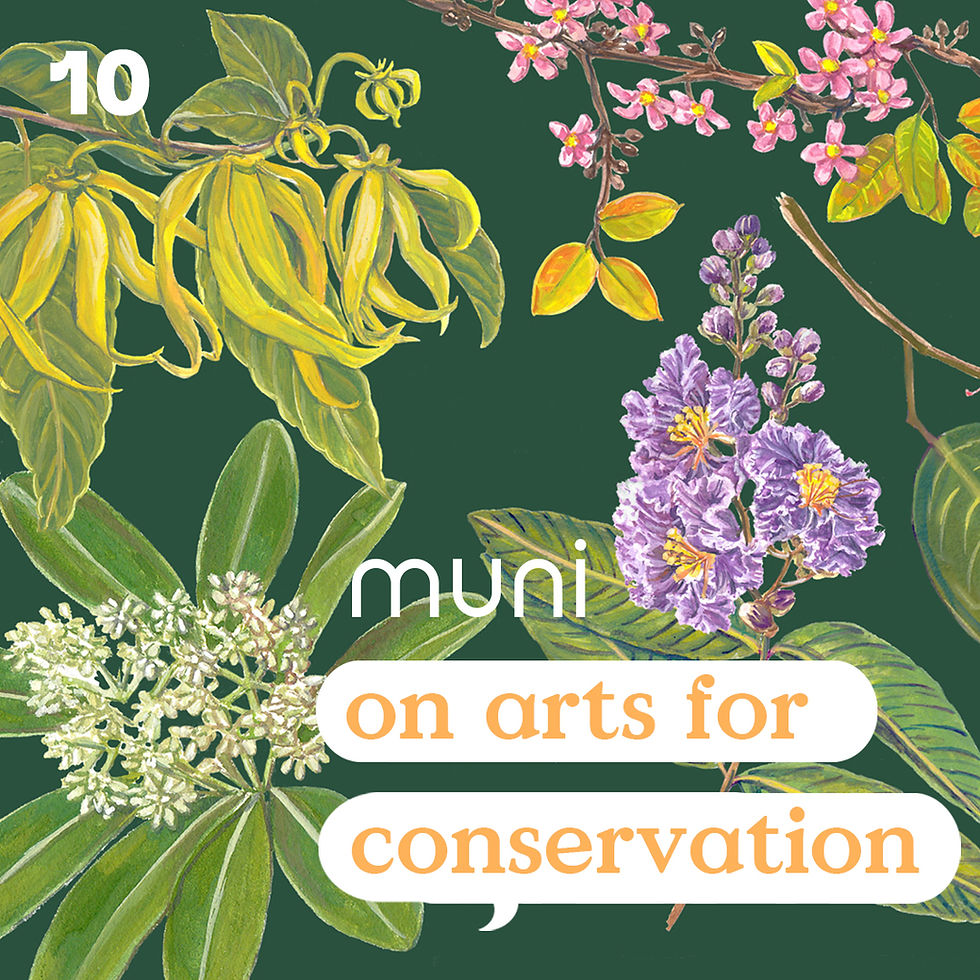How Citizens Can Help Redesign Sustainable Cities
- Team Muni

- May 27, 2015
- 3 min read
#MUNIonThis: There is an awareness amongst us Filipino citizens about how our cities shape and affect our daily lives. Some glaring examples are the painful daily commute to and from work, air pollution, and a lack of a suitable system for those who would like to walk/bike around the Metro more often, or a lack of green, open spaces in which we can seek solace and silence from the daily grind.
The number of problems and growing dissatisfaction amongst designers and citizens alike has sparked a number of conversations about how we can make our cities, not only better, but greener and more sustainable. However, it can get a bit overwhelming: how does one go about changing a city? What should be done? Where should we start?
Creating Inclusive Cities Through Civic Participation
Pamela Cajilig, a design and business anthropologist and co-founder of Curiosity Design Research, and co-organizer of Manila Urban Design Week, sees these many problems present in Manila, including the top-down practice of urban planning and design. In order to help solve these problems Pam says, ”I want to help carve out paths for civic participation to find its way in the discussions about the city, so that it’s not limited to private sector boardrooms or government offices […] We need to make cities more inclusive. Everyone has a right to the city, but many cities by their physical design deepen social exclusion.”
Pam’s background in anthropology lends her a perspective of realism through critical thinking, and idealism through hope, and she emphasizes the importance of balancing both mindsets. “Anthropology has a range of tools that help city stakeholders become more attuned to unequal relations of power, everyday life, the creative capacities of people, and how city dwellers shape and are shaped by the built environment.” Taking a keen interest in “Fair Use Cities”, Pam is passionate about opening up discussion and participation in defining fulfilling city life to sectors we don’t normally think about, and how it can help us think about the changes we want to make in our cities
Creating Room for Health & Well-being Through Open Spaces
Cherrie Atilano, farmer and co-founder of Agrea (formerly Agricool), and landscape designer and co-founder at Bhumi, a landscape design, architecture, and urban planning company, sees the need to integrate more a closer relationship to nature through the inclusion of more green, open spaces.
Cherrie Atilano with AGREA young environmentalist farmers
Cherrie says, “There must be better appropriations and implementation of laws requiring big developers to provide open spaces not just for parking but real parks that people could enjoy.” She sees how cities can learn from the agricultural lifestyle, saying that citizens can learn how to grow their own food, and that we can promote this through urban, vertical, or container gardening, which can also make people more conscious about the segregation of waste. She adds, “I really want to make every vacant square meter space productive in not just planting but growing and producing something that can be eaten, provide aesthetics and contribute more oxygen to the environment. It is a dream to make our cities greener.”
People Make Cities
In all this talk about city, and ultimately, societal change, it is important to remember the role of the citizen/pedestrian in making cities better places to live. “There are some case studies, as in Estero de San Miguel, and Vigan, even in the Visayas, that show that when people are actively consulted and actively contribute to planning their urban environment, positive results are long-lasting and inspiring. This goes as far as the level of having input about what is going to be built, where, and how the project might unfold in way that involve affected communities as much as possible” says Pamela.
Cherrie says that we can be conscious of our environment, even in the city: “Most of the time we love tearing leaves off the plants while walking. I observed a lot of that or sometimes while waiting for the bus. If you happen to live in a place with space for a little bit of gardening, why not start planting and growing your own herbs, favorite vegetables, or flowers.”
There are many problems that need addressing, and we can be more active in designing our cities as it will directly affect our own quality of life as its inhabitants. Whether it’s by starting a small garden of your own, walking/biking more often, seeking out opportunities to learn more about urban design, asking fellow citizens about what’s happening in their cities or utilizing open spaces, everyone can be informed and make an impact.
Now, it’s your turn. How will you actively participate in changing your city?
Join the discussion with Pam and Cherrie at the upcoming Muni Meetup: Cities & Change on May 28, 6:30-9:00PM at Curiosity Design Research. Register for a slot here.







Comments